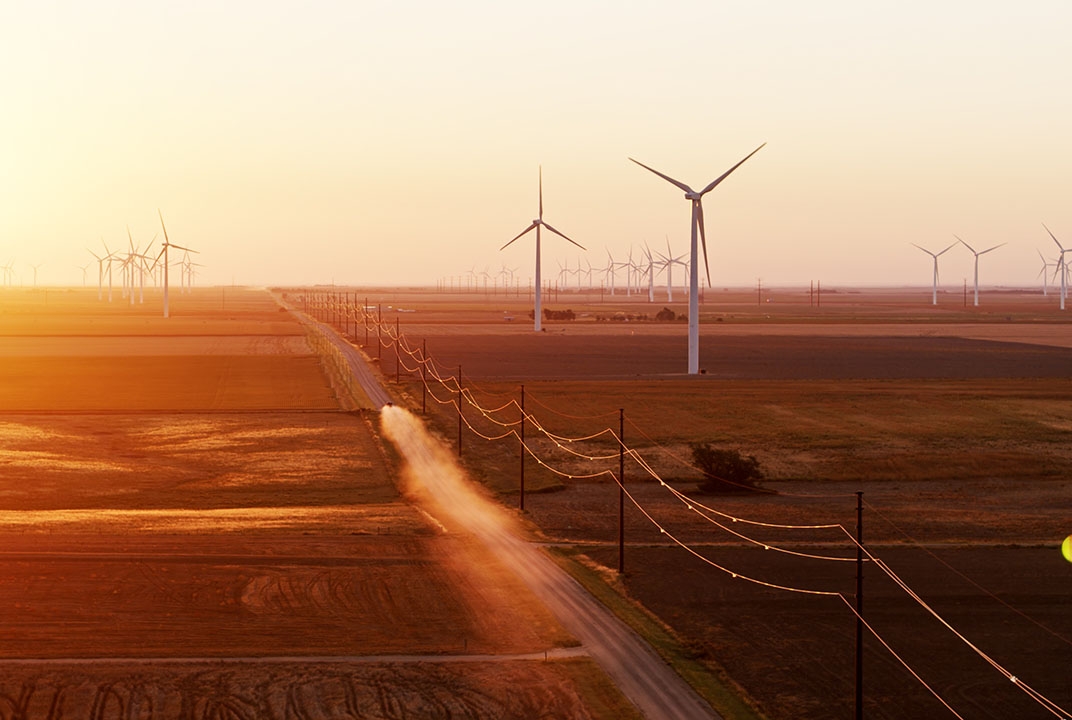Insight | Satcoms: an enabler for a greener planet
Satcoms: an enabler for a greener planet
null
The State of Broadband Report is published annually by the United Nations-backed Broadband Commission for Sustainable Development. Commissioner Rupert Pearce provided the following insight for the 2019 report, issued last week.
Communications technologies today are being called on to do more – to solve more important problems on a larger scale – than ever before. Nowhere is this more true than in the area of two of the greatest planetary challenges facing humanity: preservation of our natural resources and protection of the global environment.
Climate change, a growing population and concerns around environmental sustainability are challenging all industries to produce more, while inflicting less damage on the world around us. Satellite technologies are, and will increasingly be, a key component to meeting these challenges.
Across diverse sectors such as energy, agriculture and transportation, satellite communications are enabling Industrial Internet of Things (IIoT) solutions that are enabling companies to collect and leverage data about their operations to improve efficiency and realise new capability, while also improving their stewardship of our shared environment.
The energy sector – undergoing transformation
The energy industry is in an unprecedented state of transformation. Satellite-enabled IIoT applications are helping the industry meet increasing demands from governments, consumers and activists to reduce non-renewable energy consumption and humanity’s impact on the environment. The sector also has a great deal to gain in terms of increased outputs and profitability by harnessing smart technologies such as IIoT.
IIoT technologies are useful in all phases of the energy production and distribution supply chain. In the exploration phase, IIoT can help accelerate and enhance seismic data acquisition and analysis to improve production performance, leading to the faster and safer extraction of gas or oil. In the extraction and drilling process, IIoT can enable real-time process monitoring and predictive maintenance improving the efficiency of operations and reducing harmful environmental impacts.
Energy distributors build and operate vast networks of pipelines, from which they can gather datasets to monitor the integrity of pipes and deploy a rapid response if they detect a leak, through pressure monitoring sensors. IIoT sensors can similarly help to optimise supply and demand forecasting, as well as pipeline operations. As oil and gas is distributed across continents through expansive pipelines, IIoT-connected sensors can immediately alert authorities to leaks and accidents, reducing the risk of environmental harm and impact.
Research conducted by Inmarsat has shown that over half of distribution companies expect to use the data generated by their IIoT solutions to monitor and improve productivity (57 per cent). And crucially, extraction companies are strongly focused on the opportunity to use IIoT data to better monitor environmental changes (38 per cent) and to improve health and safety (43 per cent).
Agriculture – data supporting intelligent decisions
IIoT solutions are also helping agricultural businesses use natural resources more efficiently while also reducing the harmful by-products of their activities. One way that satellite technologies are helping these organisations do this is through the delivery of projects that involve the installation of IoT sensors monitoring soil and leaf humidity.
Utilising a Low Power Wide Area Network to connect the sensors with a satellite gateway, the resulting data allows farmers to make more intelligent decisions about their water usage and can even be used to automate water delivery to ensure it is only delivered for irrigation as needed. This prevents depletion of fragile water supplies, ensuring that ecosystems remain intact.
Another function that IoT sensors can provide is carbon dioxide monitoring. As governments are under greater international pressure to restrict some agricultural activities such as burning, placing sensors in areas where burning has traditionally occurred will indicate those farming organisations playing by the rules, and those who are not.
Transportation – global CO2 emissions on the rise
The transportation sector is also driving down its carbon footprint and minimising negative environmental impacts using satellite-enabled IoT. The International Transport Forum estimates that heightening travel demands could see global CO2 emissions from transport increase by 60 per cent by 2050. Without significant progress with the adoption of greener technologies, that figure could be considerably higher.
IoT could have a considerable impact on the emissions of logistics companies today. Using diagnostic sensors, smart telematics and other technologies to gather engine status data and automatically notify fleet managers of anomalies can help limit CO2 emissions due to faulty equipment, engine damage and even poor route planning. This data can also help extend the lifespan of vehicles, reducing emissions and minimising wastage.
But the defining challenge of the transportation industry is that vehicles can go everywhere, even places where other network technologies are not, especially into the skies and onto the seas which only satellite technology can reach. Making informed decisions in real-time depends on having data available at all times. To achieve that requires the continuous and reliable connectivity made possible by mobile satellite communications. Utilising satellite-enabled IoT to make strategic adjustments will enable transport organisations to realise significant gains in environmental sustainability and for the global logistics industry to benefit from seamless, pervasive situational awareness as material moves from its centre of production to its final destination across road, rail, air cargo and even ship.
Energy, agriculture and transportation are just three examples of industrial sectors that are leveraging the impressive ubiquity, capability and reliability of connectivity, and specifically satellite-enabled IIoT technologies, to reduce harmful environmental impacts and take better care of our natural environment. As demands for such measure continue to grow, these connectivity technologies will continue to innovate to meet them.
About the author
Rupert Pearce was Inmarsat’s Chief Executive Officer from January 2012 until February 2021. Rupert joined Inmarsat in January 2005 as Group General Counsel and, from January 2009, additionally held the position of Senior Vice President, Inmarsat Enterprises. Previously, Rupert worked for Atlas Venture, where he was a partner working with the firm’s European and US investment teams. He was previously also a partner at the international law firm Linklaters, where he spent 13 years specialising in corporate finance, M&A and private equity transactions. Rupert received an MA (First Class) in Modern History from Oxford University and won the 1995 Fullbright Fellowship in US securities law, studying at the Georgetown Law Center. He has been a visiting fellow of the Imperial College Business School, London, lecturing on the school’s Entrepreneurship programme, and is the co-author of Raising Venture Capital (Wiley).


